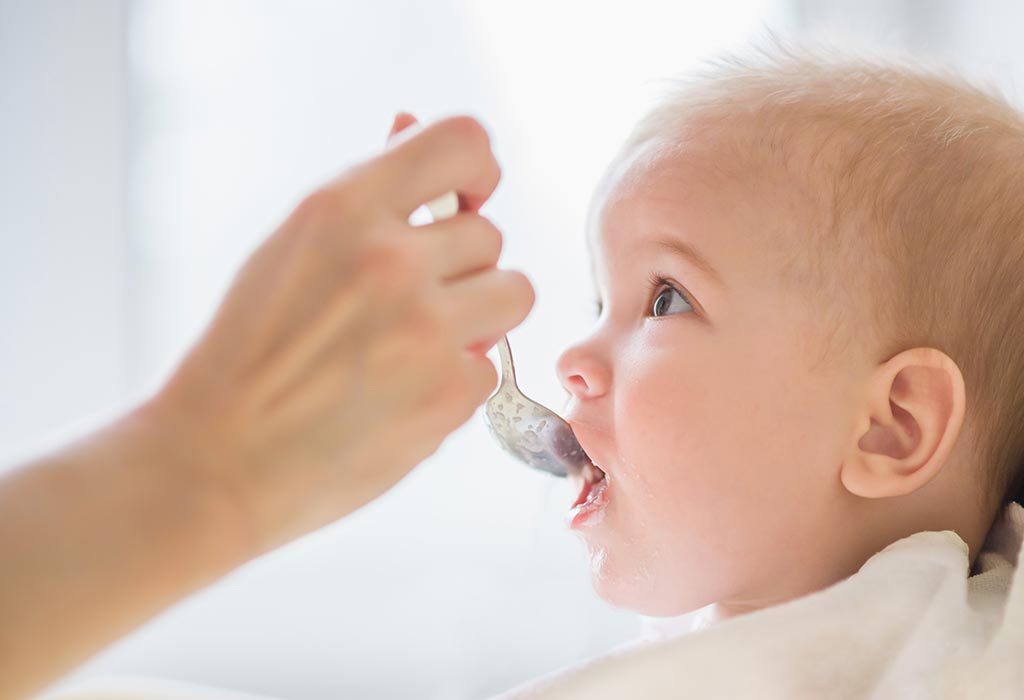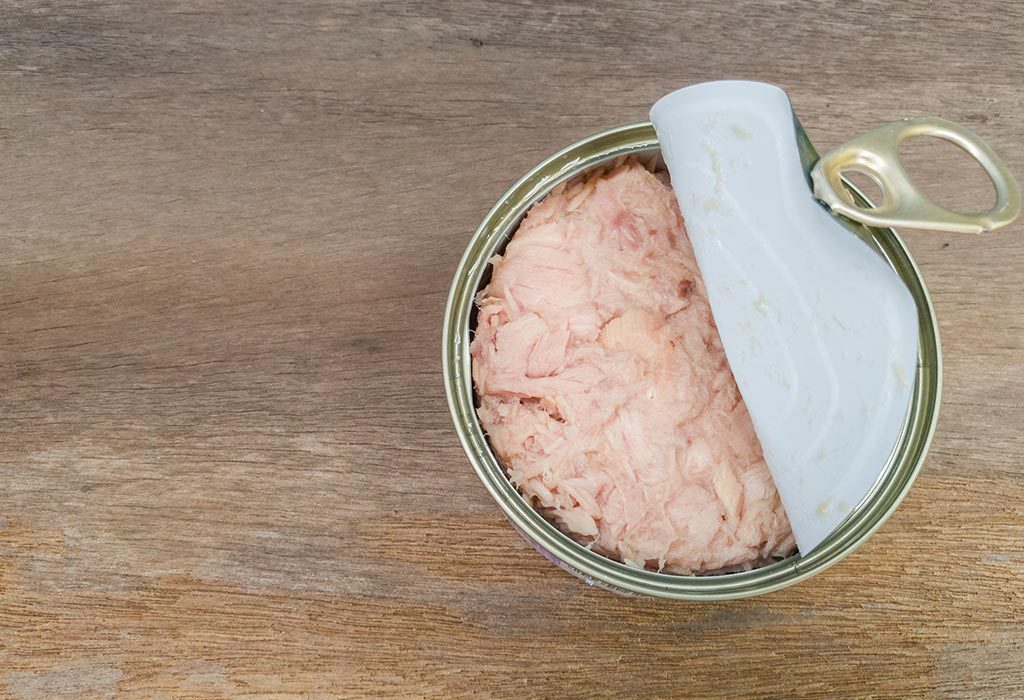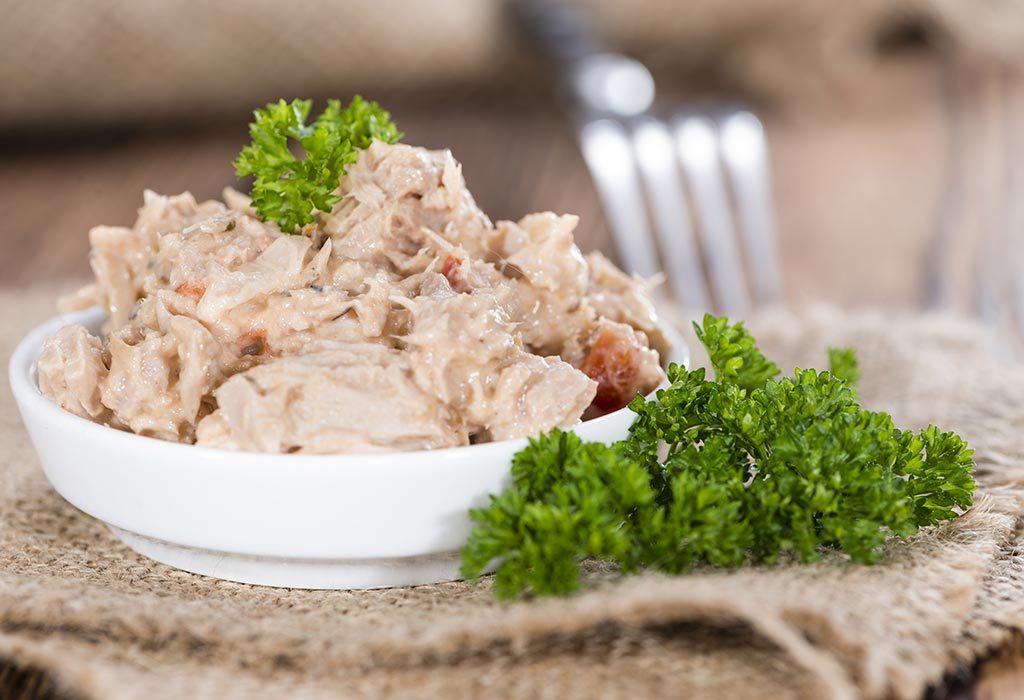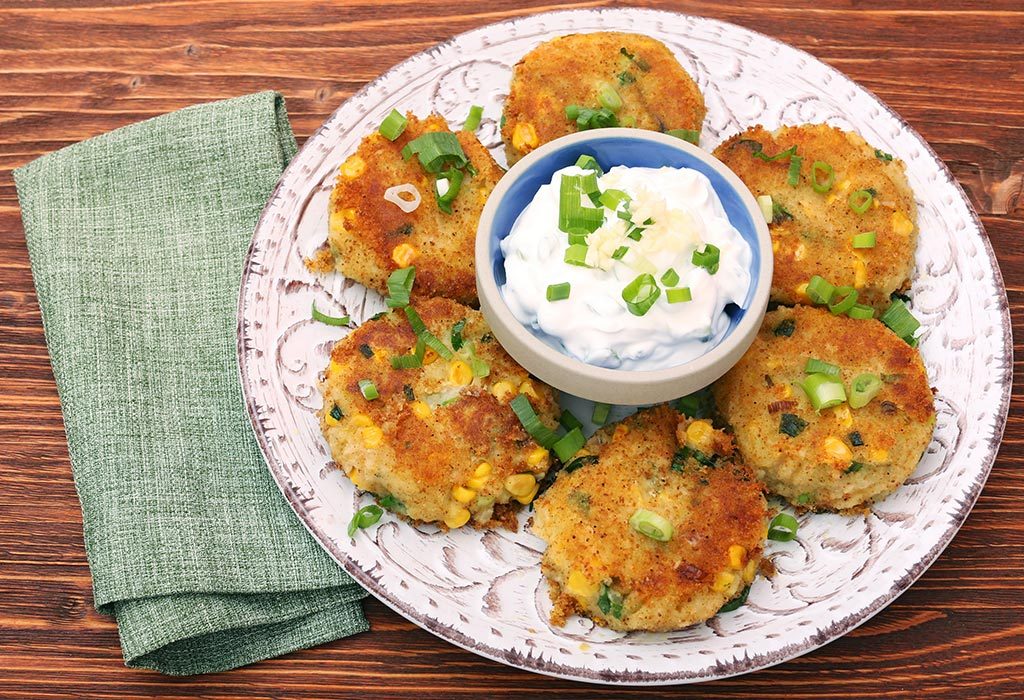In this Article
- Is It Safe to Give Tuna to Babies?
- When Can Babies Eat Tuna?
- Nutrients Available in Tuna
- Health Benefits of Tuna for Infants
- Steps to Take While Introducing Tuna to Babies
- Risks Associated With Giving Tuna to Infants
- Precautions You Should Take While Giving Tuna to Your Young Child
- Easy Tuna Recipes for Babies
Tuna is filled with nutrients for maintenance and growth of the body. It is rich in proteins and Omega 3 fatty acids, and protects the body from heart diseases and cancer. Mercury exposure is the biggest concern regarding tuna fish; however, age appropriate servings of low-mercury fish in limited quantity is deemed safe.
Is It Safe to Give Tuna to Babies?
Fish is essential for the healthy growth and development of the baby. The most valid concern is mercury contamination. But if you give the baby very little portions that are appropriate for his age, tuna can prove to be very beneficial for his health. A wealth of nutrients can be supplied if your baby is provided with canned tuna.
When Can Babies Eat Tuna?
While deciding when to let your baby have tuna, you should be careful about the allergies it can cause. Although tuna isn’t really the type of seafood that can induce allergies, every person’s body reacts differently. Your child should have touched the six-month mark before you dish up tuna for any of his meals. Check if a small serving is causing any harmful reactions, and if not, you can definitely feed him tuna more often.

Nutrients Available in Tuna
The nutritional quotient of tuna is very high. It contains multiple vitamins, such as Vitamin B3, Vitamin B12, Vitamin B6, Vitamin B1, Vitamin B2, and Vitamin D. It is also rich in phosphorus and selenium, and a wonderful source of minerals like potassium, magnesium, and iodine.
Health Benefits of Tuna for Infants
Can babies have canned tuna? As it happens, canned light tuna is considered best for infants! Omega 3 reduces joint pain and stiffness, promotes neurological development in children, and helps fight asthma. The rich content of proteins builds muscles and balances caloric content. It surely is a superfood to enjoy!
Steps to Take While Introducing Tuna to Babies
A few essential steps are a must before you use tuna for baby food.
1. Use Only Thoroughly Cooked Tuna
As there is a great risk of bacteria, ensure that the canned tuna is thoroughly cooked. Care must be taken to ensure that there are no bones that the baby can choke on.
2. The Intake Should Be Limited
Remember to buy canned tuna which is relatively safer for babies. Serving tuna in large quantities can harm the baby, so limit feeding the baby to twice a week only.

3. Keep a Watch on Allergies
Be watchful of allergies that can occur due to feeding tuna to babies. After eating tuna, if your baby has a rash on his lips or face or swelling of the tongue, then you should stop giving tuna. If your baby is vomiting, wheezing, has an upset stomach or diarrhoea, take him to the doctor as these are signs of allergy.
4. Add Vegetables with Tuna
The best way to make the dish enjoyable and nutritive is to combine the tuna with pureed vegetables to ensure your baby gets plenty of nutrients.
Risks Associated With Giving Tuna to Infants
Tuna may be contaminated with mercury which can harm the baby’s nervous system, which is the major risk or concern when it comes to feeding babies fish in general. If consumed in unhealthy quantities, it can result in neurological problems; hence, the stress on small servings once or twice a week only.
Precautions You Should Take While Giving Tuna to Your Young Child
Some precautions have to be taken to ensure safe intake of tuna:
1. Remember That It Could Contain Mercury
Even within canned tuna, albacore (‘white’) tuna contains more levels of mercury than canned light tuna or skipjack. It’s safer to go for options with a lower content of mercury.
2. Consume Tuna after Short Intervals
While introducing tuna to your toddler, take it slow at first. Watch out for any seafood allergy and then give it again, and keep checking that your child does not show any symptoms of an allergy.
3. Try Other Types of Fish
If you wish to feed your child fish but are worried about the mercury content, you can try salmon too. Salmon has almost identical nutritive properties, and makes for a great alternative.
4. Stick to Small Servings
For safety purposes, stick to age-appropriate servings.
Easy Tuna Recipes for Babies
Here are 2 recipes you can feed your little one once he has crossed 6 months of age and has started to develop a taste for solids:
1. Tuna Salad with Yogurt
Introduce tuna with this simple and easy recipe.
Ingredients
- 1 can low sodium light tuna
- ¼ cup organic whole milk plain yoghurt
- 1tbsp of fresh chopped or dried parsley
Method
- Collect the ingredients in a bowl and mix well.
- Mash it properly to ensure the baby can swallow the mixture easily.
2. Tuna Cakes
Babies can enjoy small, bite-sized portions of this recipe, but this can be a great treat for all members of the family!
Ingredients
- 1 can tuna
- Breadcrumbs
- 1 egg
- 2 small potatoes
- ½ onion chopped
Method
- Boil the potatoes first and mash using a blender.
- Mix all the ingredients in a bowl with breadcrumbs.
- Heat butter in a skillet. Cook on one side and then the other.
Tuna is a powerhouse of essential nutrients, and offers several health benefits. Make sure to check if your baby can have tuna without any problems!











